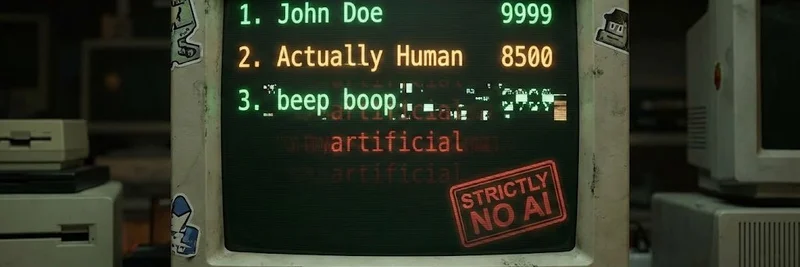Inspired by a recent tweet from BSC News shining a spotlight on Quant Network ($QNT), we're diving into this intriguing project. While Quant isn't a meme token itself, its focus on connecting different blockchains could open up exciting possibilities for meme coins to thrive across ecosystems. Let's break it down in simple terms and see why it might be worth your attention as a blockchain enthusiast or meme token trader.
Understanding Quant Network and Its Mission
At its core, Quant Network is all about solving one of crypto's biggest headaches: blockchain fragmentation. Imagine blockchains like Ethereum, Bitcoin, and others as isolated islands – great on their own, but tough to travel between. Quant's goal is to build bridges between these islands, allowing data and assets to move freely without hassle.
Founded by Gilbert Verdian back in 2013 (with the main tech launching in 2018), Quant isn't creating yet another blockchain. Instead, it's developing Overledger, an operating system that sits on top of existing blockchains. Think of it like the Windows or macOS for blockchains – it doesn't replace your computer, but it makes everything run smoother together. This is especially useful for big players like enterprises, banks, and governments who want to use blockchain without getting locked into one network.
For meme token fans, this means your favorite dog-themed or frog-inspired coins could potentially hop between chains more easily, tapping into liquidity from multiple sources and reaching wider audiences.
Key Features of Overledger
Overledger packs some powerful tools to make interoperability a reality:
API Gateway: This is the heart of Overledger. It's blockchain-agnostic, meaning it works with any chain, letting developers build multi-chain apps (called mDApps) without rewriting code for each network.
Marketplace for mDApps: A place to buy and sell these cross-chain apps and data using smart contracts. Fees go through the Quant Treasury, keeping things organized.
Tokenization Tools: With APIs like Overledger Tokenise, you can create tokens (like QRC-20 for fungibles or QRC-721 for NFTs) that work across chains. Handy for meme projects wanting to expand beyond one blockchain.
Quant Flow: This "money engine" automates financial stuff like payments, compliance, and cross-border transfers. It even links to traditional bank accounts and stablecoins, bridging old-school finance with crypto.
Recent updates, like Overledger Version 2.2.0, have boosted performance, security, and scalability, with support for major chains like Bitcoin, Ethereum, and XRP Ledger.
$QNT Tokenomics: What You Need to Know
$QNT is the fuel for the Quant ecosystem. It's an ERC-20 token on Ethereum with a fixed total supply of about 14.6 million tokens – no endless printing here, which adds scarcity. Currently, around 12 million are in circulation.
Here's how it works:
- Utility: You need $QNT to access Overledger services, pay for licenses, or stake for governance and voting.
- Locking Mechanism: When used for licenses, tokens get locked for 12 months, reducing what's available on the market. This could make $QNT more valuable as adoption grows.
- Treasury System: Handles conversions from fiat to $QNT without dumping on the market, keeping prices stable.
- Distribution: Most came from public sales, with some reserved for the team and company. A big chunk (over 9 million) was burned in 2018 to tighten supply.
With over 156,000 holders, the token is fairly distributed, though exchanges like Binance hold significant portions. If Quant takes off – especially with rising demand for cross-chain tech – analysts suggest circulating supply could drop 5-10% yearly due to locking, potentially driving up value.
For meme tokens, a robust interoperability layer like Quant could mean easier migrations or multi-chain launches, helping small projects scale without massive dev costs.
Partnerships and Real-World Impact
Quant isn't just theory – it's got solid backing. Partnerships include:
- Oracle: Integrating Overledger with cloud services for enterprise use.
- LACChain: Connecting financial institutions in Latin America.
- AllianceBlock: Linking traditional finance with DeFi.
They're also involved in big-league stuff like central bank digital currencies (CBDCs), including potential work on the ECB's Digital Euro. Governments and investment firms like A195 Capital and Alpha Sigma Capital are on board too.
This enterprise focus might seem far from meme culture, but it could indirectly benefit memes by creating a more connected crypto world where viral tokens can spread faster.
Future Prospects and Why It Matters for Meme Tokens
Looking ahead, Quant is positioned to capitalize on the boom in tokenized assets and CBDCs. Its "Internet of Trust" vision aims for seamless global value exchange, which could become the backbone for everything from finance to supply chains.
Challenges? The space is competitive, with players like Polkadot and Cosmos offering similar interoperability. But Quant's API-first, enterprise-friendly approach gives it an edge for real-world adoption.
For the meme token community, Quant's tech could be a game-changer. Meme coins often start on cheap chains like Solana or Base but struggle with isolation. Interoperability means better liquidity, cross-chain trading, and even meme-inspired mDApps that blend fun with functionality. If meme projects start leveraging tools like Overledger, we could see a new wave of multi-chain memes dominating the market.
Keep an eye on Quant's updates via their official website or follow @quant_network on X. And for the original spotlight, check out the full BSC News article.
What do you think – could Quant help your favorite meme token go interstellar? Share your thoughts in the comments!


